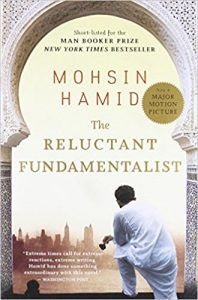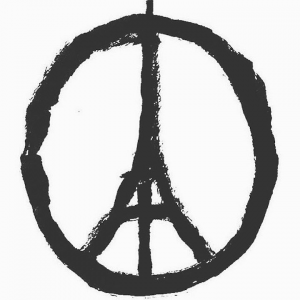It is undeniable that 9.11 had a devastating impact – not only on America, but on the whole world. Yet the shock was immense and catastrophic stories of the victims has been conveyed extensively, most of the stories of the influence on people in the Middle East or Islamic people has been remained unheard.
In the ASTU class, we read the book “The Reluctant Fundamentalist”, written by Mohsin Hamid. The book describes how a Pakistani man, Changez went through the post 9.11 era in America, where he talks to an unspeaking American stranger in a café in Pakistan. Before the 9.11, Changez had hope and expectations toward America to study and work there, while the 9.11 changed people’s perception toward him and also he roved between his two identities as a New Yorker and Pakistani, and eventually he goes back to his own country.
When I was searching about the book online, merely for linking the page, I accidently came across one book. It took a while until I realized that it is a Japanese translation of “The Reluctant Fundamentalist” – since the Japanese title was, as I directly translate it, “The Dream the Bat Dreamed”. Yes, the Japanese translation sometimes completely changes the title when translating books or movies. This one must be one of them – but somehow I couldn’t just ignore it and just go on, and rather reminded me about the scene where the bat came out in the book. Right after the scene that Changez saw the news about 9.11 in Manila and focused back to the unspoken American in the café, he mentions about the American man flinching to the bats. After Changez says that the bats are “circling rather low”, he says “Let us, like the bats, exercise our other senses, since our eyes are of diminishing utility” (pp.75-76). When I first read it, it sounded as if he was only talking about the situation of the café, being dark with the sun setting. Whereas, I felt as if Hamid purposefully intended to convey a meaning at this end of the important chapter of a turning point. What does it mean by the bat being “blind”?


One way to interpret the bat is that bats are Changez and the unspeaking American man, as Changez says. Right before mentioning being bats, he says “enough of these speculations!” to the man. Also, the identity of the unspeaking American man who is not revealed… which can be thought that these situations having no clue about each other would be “blind”. Maybe Hamid used this metaphor for the two people being suspicious and trying to find the intention of each other though the conversation (listening) or other senses. Another way would be considering the bat as Changez himself during the post 9.11 era, trying to be accepted by America or his lover Erica while being concerned of his own country which is in crisis by America due to the starting of the “War of Terror”. As we learned in POLI class, America labeled other countries rather if they are its ally or enemy, and attacked nonconventional enemies which generated a host of new problems. Changez was one of the victims as well, being discriminated by his physical appearance and feeling the emotion against America by the national affection toward Pakistan. Thus, he might be the bat, flying between the two identities of a “product of American university” and “Pakistani”. And as I believe, from the Japanese title “The Dream the Bat Dreamed”, Changez had a dream, being successful in America with sill keeping his Pakistani identity, but the blindness of the world didn’t allow him to do so, and eventually lead to him acting against America in Pakistan.
As most of the master narrative for 9.11 is a perspective from Americans, and the counter narrative becomes the suffering from racism or stereotypes of Islamic people, I feel that Hamid still doesn’t make the Pakistanis’ story clear, but made it hidden behind the clear story of Changez. As he fosters the acknowledgement of the counter narrative of 9.11, he also includes the intention of highlighting the ambiguity and indiscernibility of the hidden story.
In class, there was a question asking the difference between what is commemorated or not. Events such as 9.11, the two world wars, or other tragedies often get remembered by the collective through medias and memorial services. However, the death of each person, or which seems to be irrelevant to one culture gets to be the counter narratives. I remember three years ago when the Paris attacks happened, a lot of people including celebrities and even my friends in Japan shared on social media, a picture which illustrated the symbol of the Eiffel Tower with words praying for the victims.

This was a nice movement, commemorating the innocent victims of the terror attack though social media – this might be the very useful purpose of using the media, by sharing our feelings all over the world. However, just knowing this attack by the Islamic Fundamentalist and not knowing what is happening in the Middle East might enforce the racism toward Islamic people. What happens to the hundreds of people who loses their life every day? Is the counter narrative of the story forgotten forever? The issue of the counter narrative is not merely that it is not being conveyed… it is that we don’t even notice what isn’t conveyed – just as how I never noticed about the scene of the bat in The Reluctant Fundamentalist – and may emphasis one single perspective.
2 replies on “What a Story Implies”
Azumi! That is so interesting about the title! I had no idea. I’m really glad you chose to pursue this line of analysis. Very cool. – M. Luger
Thank you so much!